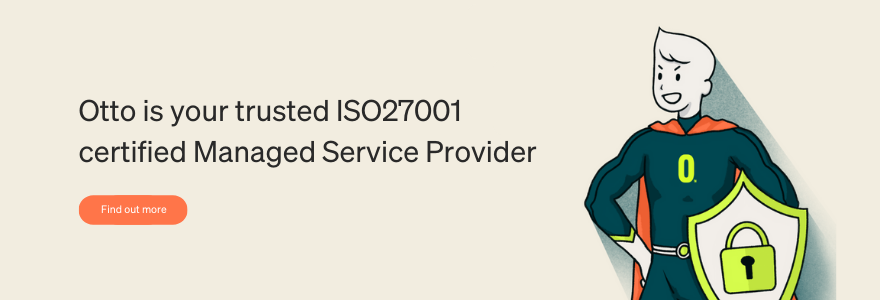In the fast-paced world of IT, where new digital frontiers emerge daily, Australian IT leaders like Otto IT face numerous challenges in balancing operations and innovation. With the rising popularity of Human-Centred Design (HCD),a concept we’ve always adhered to as a human-first IT provider, it’s time to explore how this approach empowers our IT service delivery to deliver tech that people love to use, streamlining workflows, and helping our clients surge past the competition.
Navigating IT service delivery challenges
The past three years have brought a multitude of challenges for IT leaders, from adapting to hybrid work models to embracing digital transformation. Amid these rapid changes, organisations often find it challenging to bridge the gap between ideas and practical solutions for service delivery. While methodologies like Agile and improved process management have positively impacted product development, they do tend to overlook the day-to-day people operations that keep the IT engine running smoothly.

What is Human-Centred Design (HCD)
Human-Centred Design, a relatively new concept in the IT realm, draws from the principles of “design thinking” to address the specific needs of service delivery. By adopting HCD, our teams can craft user stories that serve as a pipeline for identifying and resolving development and operational challenges, resulting in a more efficient and effective IT service landscape.
Bringing HCD into IT operations
When your drive is to provide superior IT service delivery, it’s crucial to strike a balance between customer focus and internal user experience. Often, IT providers may solely concentrate on customer needs, but this approach might not be sustainable in the long run. A human-centric approach encompasses both the customer and the internal user, creating more accessible and user-friendly products for optimal outcomes.

Creating and incorporating user journey maps
HCD involves putting end-users at the forefront, considering their experiences with systems, processes, and technology. By mapping the user journey, IT leaders gain valuable insights into the emotional aspects of work, identifying pain points and areas for improvement. This discovery work helps us to pave the way for streamlining workflows and finding opportunities for automation and AI integration.
HCD benefits for MSPs and our clients
Embracing HCD can lead to remarkable benefits for organisations. Enhanced employee engagement and efficiency, improved collaboration across stakeholders, cost reductions, and a clear vision for data utilisation are among the tangible outcomes of an HCD-driven IT strategy. By implementing solutions that alleviate challenges and streamline workflows, organisations can move beyond day-to-day tasks and embrace automation and efficiency.
We’ve never been interested in traditional service providers’ claims, choosing to focus on people first and tech second – and HCD offers a much-needed paradigm. With an HCD approach, we can develop solutions that address root causes rather than treating symptoms. Process improvements and automation become more achievable, propelling organisations ahead of the competition.
An HCD future for IT service delivery
Human-Centred Design may be a new concept for many MSPs, but its impact is already evident in our MSP – and it’s here to stay. The compelling results speak for themselves, with organisations witnessing enhanced efficiency, collaboration, and strategic alignment. As the IT landscape continues to evolve, a human-centric approach will be the guiding light for IT leaders, empowering us to surpass competition and achieve exceptional outcomes for you, our clients!




